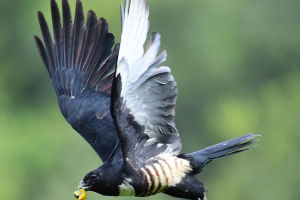Different Penguins
Emperor penguins are the tallest and heaviest of all extant penguin species. They are endemic to Antarctica and the only penguin species that actually breed during the Antarctic winter.
Adult emperor penguins are more than 1 meter long and weigh between 22 and 45 kilograms.
The king penguin is the second largest penguin, similar in appearance to the emperor penguin, but much thinner.
They stand 70 to 90 cm tall and weigh 9.3 to 18 kg as adults. King penguins breed on temperate islands in northern Antarctica.
King penguins are very similar to the larger emperor penguins, but they are actually easy to tell apart. Adult king penguins have cheek patches that are pure bright orange, while emperor penguins have cheek patches that are yellow and white.
This season, if viewed from above, the Salisbury Plain on South Georgia Island in Antarctica is covered in white and brown "rivers". It is a river composed of thousands of king penguins.
Salisbury Plain is known for king penguin breeding, large groups containing hundreds of thousands of individuals.
Although seemingly very successful, most king penguins take a full two years to raise a chick. Interestingly, their large, fluffy brown chicks have been mistaken for a distinct species and dubbed "shaggy penguins" by scientists.
King penguins incubate their eggs with their feet, and after about 55 days of hatching, they still keep them warm on their feet. These tasks are done by husband and wife in rotation. They rotate roughly every 3-7 days, with one guarding the chicks while the other forages for food.
The conservation phase lasts 30-40 days. By then, the chicks have grown quite large. This is when the little one becomes very curious and will go great distances as they explore their surroundings.
In this regard, penguins have evolved into a "nursery" with distinctive characteristics in the animal kingdom.
All chicks form a group and are looked after by several adult penguins. The vast majority of parents leave their chicks in the nursery to feed themselves and other penguin chicks when they return from predation.
King penguins are annually monogamous, having only one mate each year and remaining faithful to that mate. The chance of changing mates during the next breeding season is around 30% - 50%.
Emperor penguins are also annually monogamous, but the same pair have less than a 10% chance of having another offspring the following year.
Scientists have thoroughly studied their behavior in the frozen Antarctic: the coldest breeding environment of any bird, with temperatures that can reach −40 °C and winds of 144 km/h.
Once the female lays her eggs, she transfers them to her mate with great care and then runs off to return to the sea to feed for a full two months. Egg transfer is difficult, especially for new parents. Many little couples will drop or break eggs in the process.
Even if the egg is not broken, if it falls, the chick inside will die. Because eggs cannot withstand subfreezing temperatures on the icy ground of Antarctica for more than a minute or two.
So, once the egg is dropped, the relationship of a penguin couple is immediately over.
And the male emperor penguin who successfully received the egg turned into the most competent father in the biological world.
The egg is hatched during the dark, blizzard winter, covering it with skin and feathers on the top of the feet for 65-75 days.
Emperor penguins are the only penguin species where the father has been observed to incubate eggs alone (all other penguin species, such as king penguins, have alternate parental incubation).


